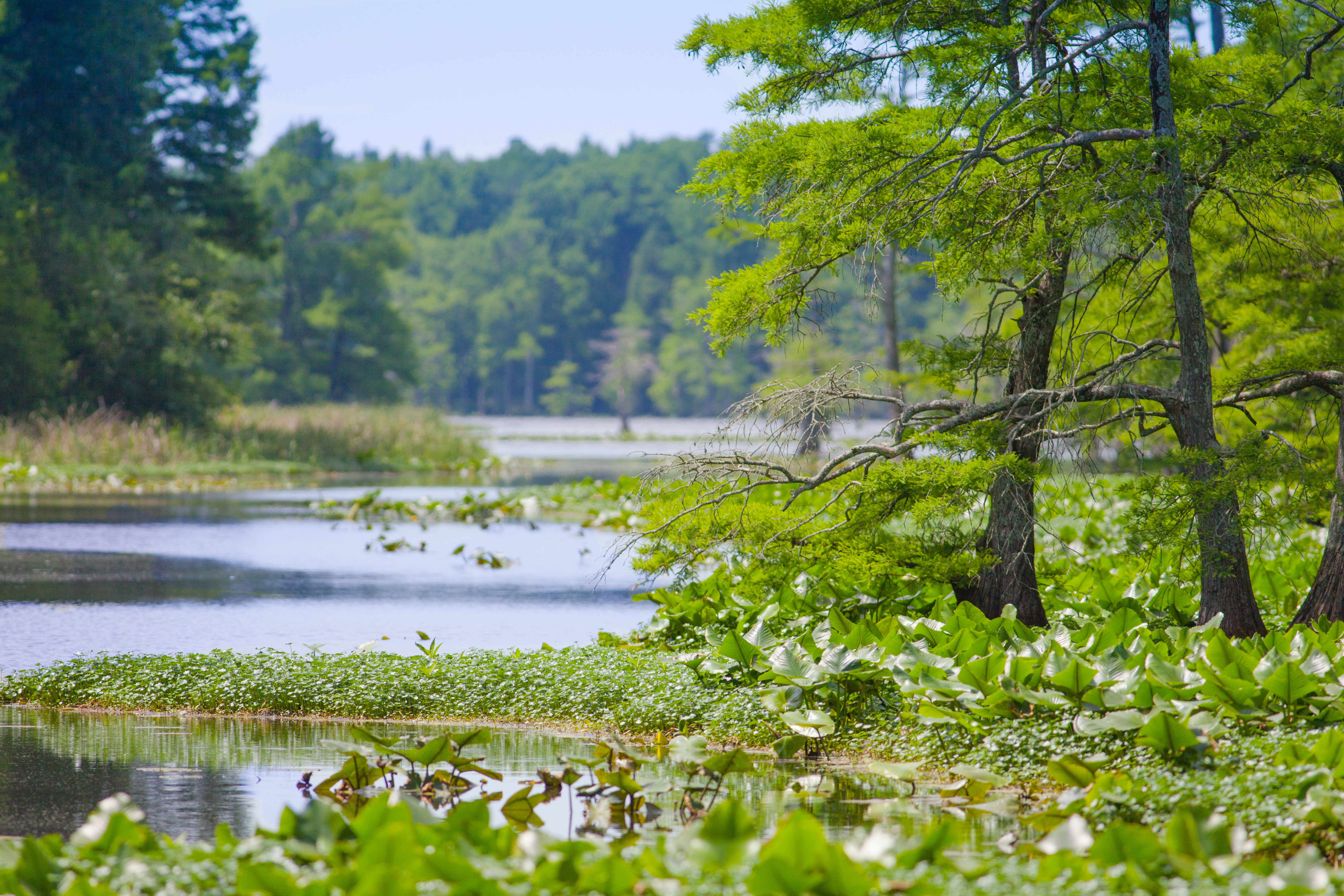The month of May marks American Wetlands Month, established by the United States Environmental Protection Agency in 1991, as a time to celebrate the critical role wetlands play in our ecosystems. Wetlands are one of the most productive and unique habitats in the world. Known as “nature’s kidneys,” they directly impact clean water by slowing the flow of water on a landscape, allowing sediments to be stored.
In the most general terms, a wetland is an ecosystem that contains three common features: 1) hydrophytic vegetation (e.g., water-loving plants), 2) hydric (e.g., moist) soil, and 3) wetland hydrology. Properly functioning wetlands offer extensive benefits, including improving water quality by reducing sedimentation, creating wildlife habitat, providing recreational opportunities such as hunting, boating, fishing, and bird watching, and reducing the prevalence of flooding by storing water.
Tennessee contains more than 787,000 acres of wetlands, many of which lie within the western side of Tennessee. Bottomland hardwoods, primarily found in West Tennessee, are the most widespread wetland system in Tennessee and the largest forested wetland system in North America. Bottomland hardwoods are described as “river swamps” found along rivers and streams, including the Mississippi River. These forested wetlands serve as important habitat for birds, especially ducks, and many other water-loving species of animals and plants. The bottomland hardwoods along the Mississippi River are known for their ability to absorb nutrients (such as nitrogen and phosphorus) from adjacent agricultural practices as well as reduce sediment entering the river. These hardwoods are also the heart of the Mississippi Flyway, a larger corridor used by more than forty percent of North America’s waterfowl and sixty percent of all bird species migrating through the United States.
Unfortunately, like in many states, wetlands have a long history of being damaged. Approximately sixty percent of Tennessee’s original wetlands have been lost, primarily to conversion to agriculture, stream channelization, and urban growth. As wetlands are destroyed, an ecosystem’s hydrologic (e.g., water) function is also lost. These lost wetland functions result in an increased frequency of flooding, higher levels of sedimentation, and reduction of vital habitat. By 1984, more than half of all wetlands in the United States had been lost to development and agriculture. To prevent and offset the destruction of wetlands, President George H.W. Bush adopted the national “no net loss of wetlands” policy in 1989. This policy provided the framework for offsetting impacted wetlands with the protection, creation, or restoration of wetlands of similar size and function. Although this means natural wetlands can be impacted for a new subdivision, road, farm, or grocery store, the overall acres of wetlands remain the same or increase.
Interested in visiting some of Tennessee’s wetlands? Consider checking out:
- Meeman-Shelby Forest State Natural Area, Shelby County. Described as one of the largest contiguous tracts of bottomland hardwood forest along the Chickasaw Bluff, this area provides important habitat for rare species, including the interior least tern (Sterna antillarum athalassos).
- Morrison Meadow State Natural Area, Warren County. Although only twenty acres, Morrison Meadow is an example of a once extensive wetland prairie habitat and is considered a botanically significant site in Tennessee.
- Reelfoot Lake State Park and Natural Area, Lake and Obion counties. Although a lake is not considered a wetland, this natural area includes marshes and bottomland hardwoods, along with the lake. Reelfoot is considered a premier bird-watching site and has been designated as an Important Bird Area by the Audubon Society. Numerous waterfowl and bald eagles utilize this large property.
- Walker Branch State Natural Area, Hardin County. The wetlands provide significant habitat for breeding dragonflies and damselflies. This property is managed for hunting, so access is limited.

